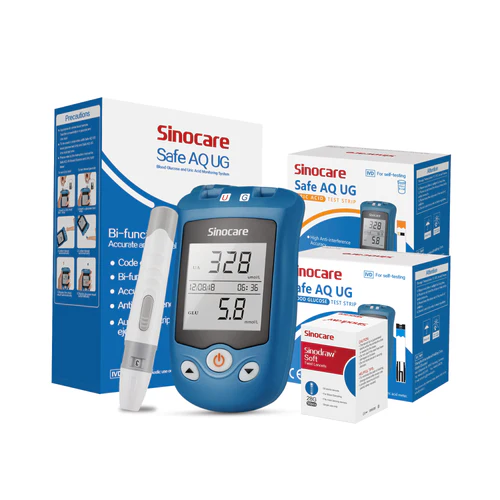Sinocare is a trusted provider of diabetes management solutions, specializing in developing tools that support safe and effective health monitoring. The company emphasizes that proper handling of supplies paired with blood sugar monitor—including used lancets and test strips—is just as critical as the performance of the diabetes blood glucose meter itself. With a mission to empower users through education, Sinocare advocates for disposal practices that protect both public health and the environment, aligning with the reliability users expect from their blood sugar monitor devices.
Pre-Disposal Containment: Securing Diabetes Blood Glucose Meter Supplies
For anyone using a blood sugar monitor, the first step in safe disposal is proper containment of used lancets and test strips. Lancets, being sharp biohazardous waste, must be placed in a puncture-resistant container immediately after use—preferably a dedicated sharps container, which prevents accidental pricks. Test strips, which may carry residual blood, should also be placed in the same container or a sealed plastic bag before combining with sharps. This step is non-negotiable for users of any diabetes blood glucose meter, as it reduces the risk of exposing waste handlers or others to bloodborne pathogens.
Adhering to Regional Regulations for Blood Sugar Monitor Waste
Safe disposal extends beyond personal containment to compliance with local guidelines. Different regions have specific rules for disposing of medical waste from blood sugar monitors. Many areas require sharps containers to be dropped off at authorized collection points, such as pharmacies, clinics, or community disposal programs. Some diabetes blood glucose meter manufacturers also offer mail-back programs for used supplies. Users must familiarize themselves with local regulations, as improper disposal—such as tossing sharps in regular trash—can result in fines and pose serious environmental and health risks.
Avoiding Common Mistakes in Diabetes Blood Glucose Meter Supply Disposal
Users of blood sugar monitors often make preventable errors when discarding supplies. Recapping lancets, throwing test strips in regular garbage, or flushing supplies down the toilet are dangerous practices. Recapping increases the risk of self-pricking, while improper disposal exposes waste management workers to hazards. Additionally, test strips from a diabetes blood glucose meter should never be recycled, as they may contaminate other materials. By avoiding these mistakes, blood sugar monitor users uphold the safety chain that starts with accurate testing and ends with responsible waste handling.
Safeguarding Health and Environment: The Final Step in Blood Sugar Monitor Use
Proper disposal of used lancets and test strips is an essential component of responsible diabetes management for anyone relying on a blood sugar monitor. It not only protects individuals from harm but also preserves environmental integrity, complementing the precision of a quality diabetes blood glucose meter. For those seeking a device that aligns with safe practices, the Sinocare Safe AQ UG Blood Glucose Uric Acid Meter is a reliable choice. It avoids interference from blood oxygen variations to deliver accurate results, pairing performance with the safety ethos that defines proper supply disposal for comprehensive diabetes care.

